You sense the elements of Italian style long before you see the first machine in the museum. Even the entrance to the Museo Storico Alfa Romeo (“Alfa Romeo Historical Museum”) is elegant.
Inside the distinctive display area, the cars are arranged chronologically from oldest to newest since the beginning of the company in 1910.
This red, 15 horsepower 1911 A.L.F.A. Corsa was manufactured one year after the founding of Anonima Lombarda Fabbrica Automobili (Anonymous Lombard Automobile Factory). 100 of these cars were made between 1911 and 1914.
After Nicola Romero joined A.L.F.A. in 1915, it became the marque we know today. This stunning straight-six, 3,000 cc Alfa Romeo RL Super Sport represents a line of cars built between 1922 and ’27. At a weight of 1,600 kilos (3,500 pounds), the car hit a top speed of 130 kmph/80 mph.
The integration of the spare tire into the bodywork of this 1932 8C 2300 Corto Mille Miglia is truly stunning. And the car was fast. 135 mph fast. 8C 2300 Alfa cars won the Mille Miglia in 1932 and ’33, with four consecutive Le Mans 24-Hour wins from 1931 to ’34.
The post-war Alfas set the style for others to follow. The classic front grille, the clean lines of the Touring Superleggera bodywork, and under the hood, more power for the powerplants.
This 1956 Alfa Romeo Super Sprint was capable of 190 kmph/118 mph. Whoosh!
Separated from the displays of the various decades are the prototypes—the unique, not-meant-for-production cars that stretched the limits of both style and function. This 1913 A.L.F.A. 40/60 HP Aerodinamica “Castagna Siluro” (“Chestnut Torpedo”) looks like something out of a futuristic sci-fi fantasy.
It’s not a stretch to go from the “Chestnut Torpedo” to this 1900 C52 “Disco Volante” (Flying Saucer”). With a curb weight of just 735 kilos (1,620 pounds) and a top speed of 220 kmph/136 mph, this 1952 car was way ahead of its time. Jaguar was clearly taking notice of this body style when they produced their first E-Type in 1961.
In 1955 Alfa produced this Giulietta Spider Prototipo. Styled by Pinin Farina primarily for the US market, more than 14,000 of this first Giulietta line were eventually produced.
This 1954 2000 Sportiva, with a body by Bertone and Scaglione, is one of two coupe models made by Alfa. The car was designed to compete with the Mercedes-Benz SL300. But sadly, this car never went into production.
The way the museum displays the autos is as impressive as the cars themselves. The angled mirror at the rear of these perfect, priceless cars lets visitors see all sides of the historic Alfa autos.
The Bertone styling was carried forward into this 1962 1300 Giulietta Sprint. Lightweight, fast, and fun, more than 24,000 of these cars were produced.
The serious racing section of the Museo Storico Alfa Romeo is separated from the line of passenger/production cars. This is where you can really begin to appreciate the racing history of the company.
The racing section begins with the first race winner branded with the Quadrifoglio (“Four-leaf clover”). Ugo Sivocci drove this car to victory in the 1924 Targa Florio.
Alfa entered four of these cars in the ’24 Targa Florio. Three finished in the top four, while one did not make it past the second lap. That car was driven by Enzo Ferrari.
This line of Alfa racers is led by the 1925 GP Tipo P2, winner of two races and the first World Championship for Grand Prix cars.
The 1934 Alfa Romeo Tipo B Aerodynamica P3 design that was way ahead of its time. This car beat the Nazis in their own backyard at the 1934 Automobil-Verkehrs-und-Übungsstraße (“Automobile Traffic and Training Road”) on the outskirts of Berlin.
Here’s a look under the skin of an Alfa Romeo race car. Positioned behind the driver is a 12-cylinder supercharged engine.
The Alfa Romeo Gran Premio 512 project began in 1939 with the goal of producing an advanced race car capable of beating the successful Mercedes and Auto Union automobiles. But the outbreak of World War II kept this car from ever competing.
Only two prototypes were made, in 1940 and ’41. One is here at the Alfa Museum, and the other is at the Museo Nazionale della Scienza Leonardo da Vinci in Milan.
The GP Tipo 159 “Alfetta” won four of the eight races in the 1951 Formula 1 World Championship, with legendary driver Juan Manuel Fangio winning the first of his five F1 drivers’ championships in his Tipo 159 Alfetta.
This 1967 33 Stradale Prototype is famous for design and styling by Franco Scaglione, and the car’s radical “butterfly” doors. 18 of these cars were produced between November 1967 and March of ’69.
In the foreground is the 1981 Tipo 179F Test Car, driven by Bruno Giacomelli. Beside it is the 1976 Brabham BTR45, the first Brabham to use Alfa’s flat 12-cylinder, 500 hp engine.
The cars are the stars, but it’s the engines that make them go. None are more awe-inspiring than this 1975 500 horsepower Alfa Romeo 12 cylinder boxer engine for the Tipo 33 TT12.
This beautiful Tipo 33/3 competed from 1969 to ‘71. The mirror in the museum makes it possible to see both sides of this open cockpit car.
The Museo Storico Alfa Romeo is in Arese, about 20 km from central Milano. If you want to visit, all the museum details are here: www.museoalfaromeo.com/en-us


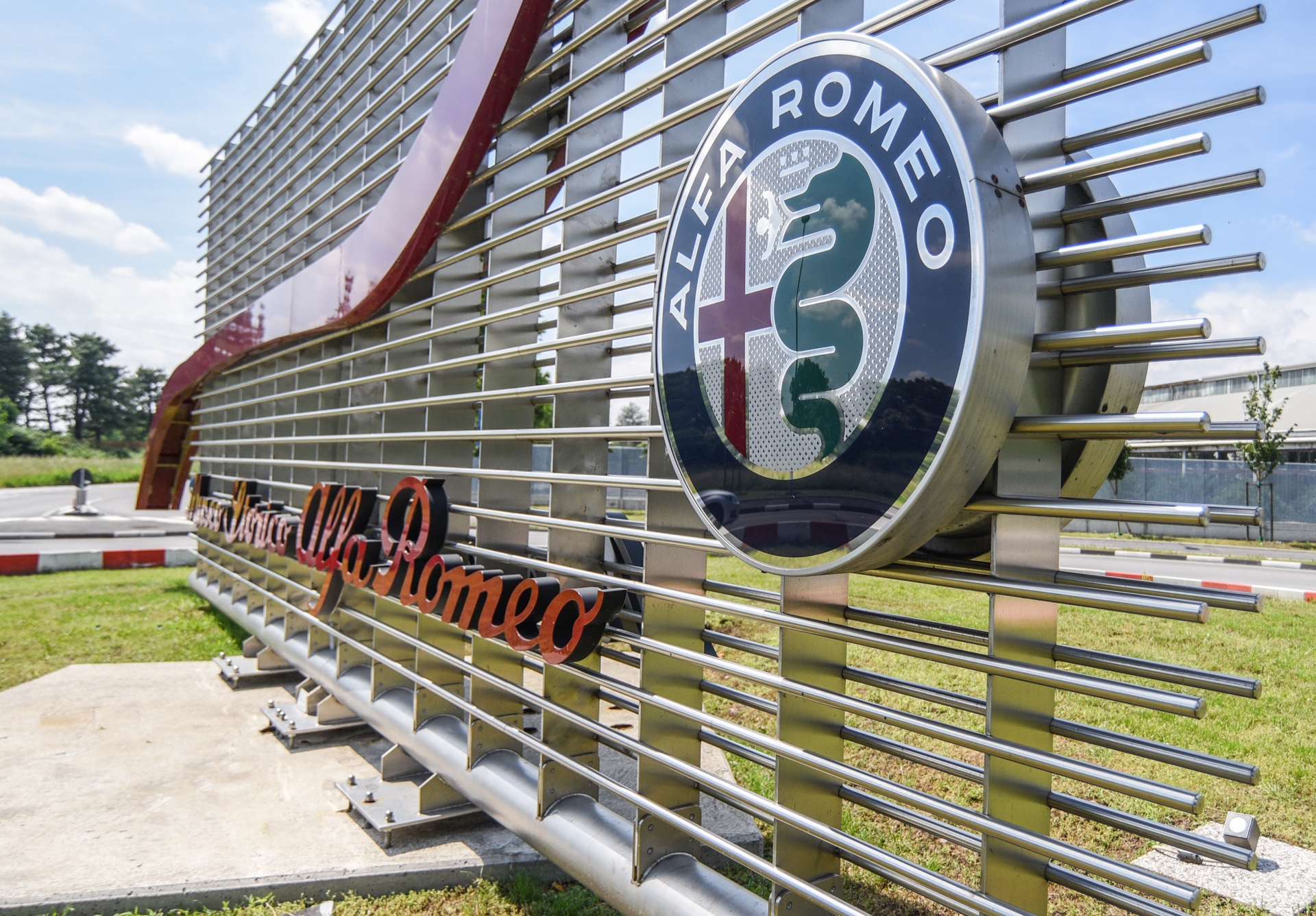




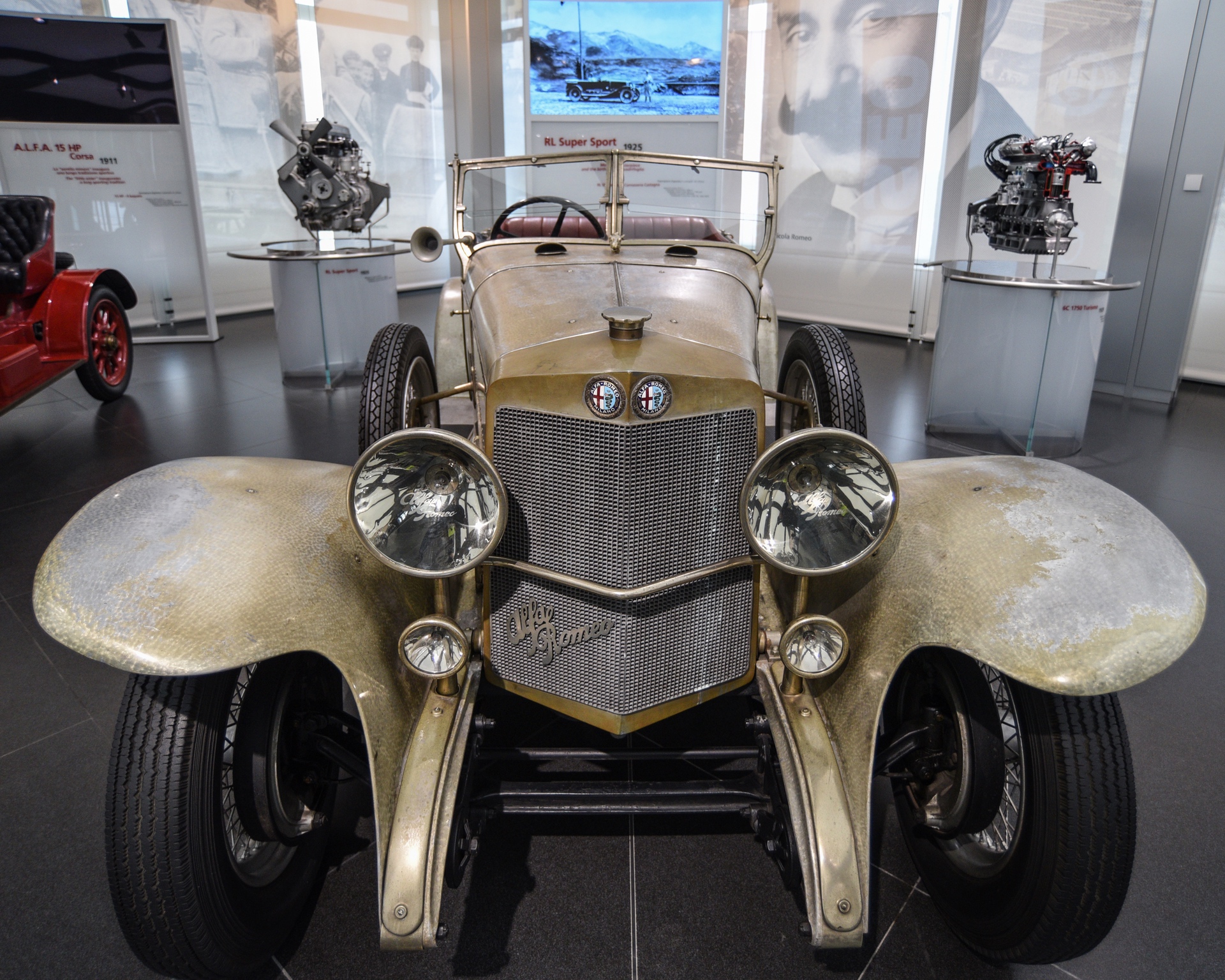
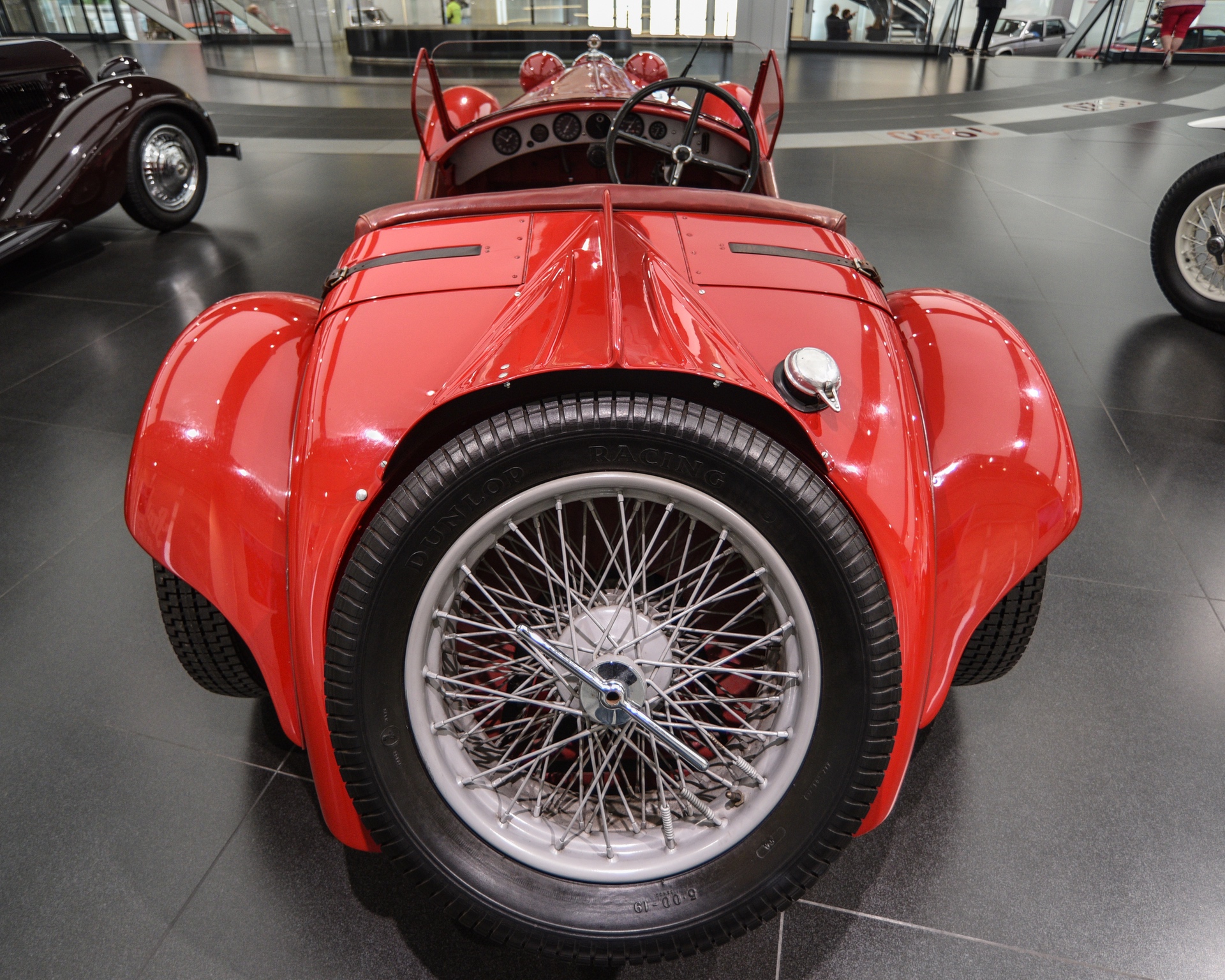





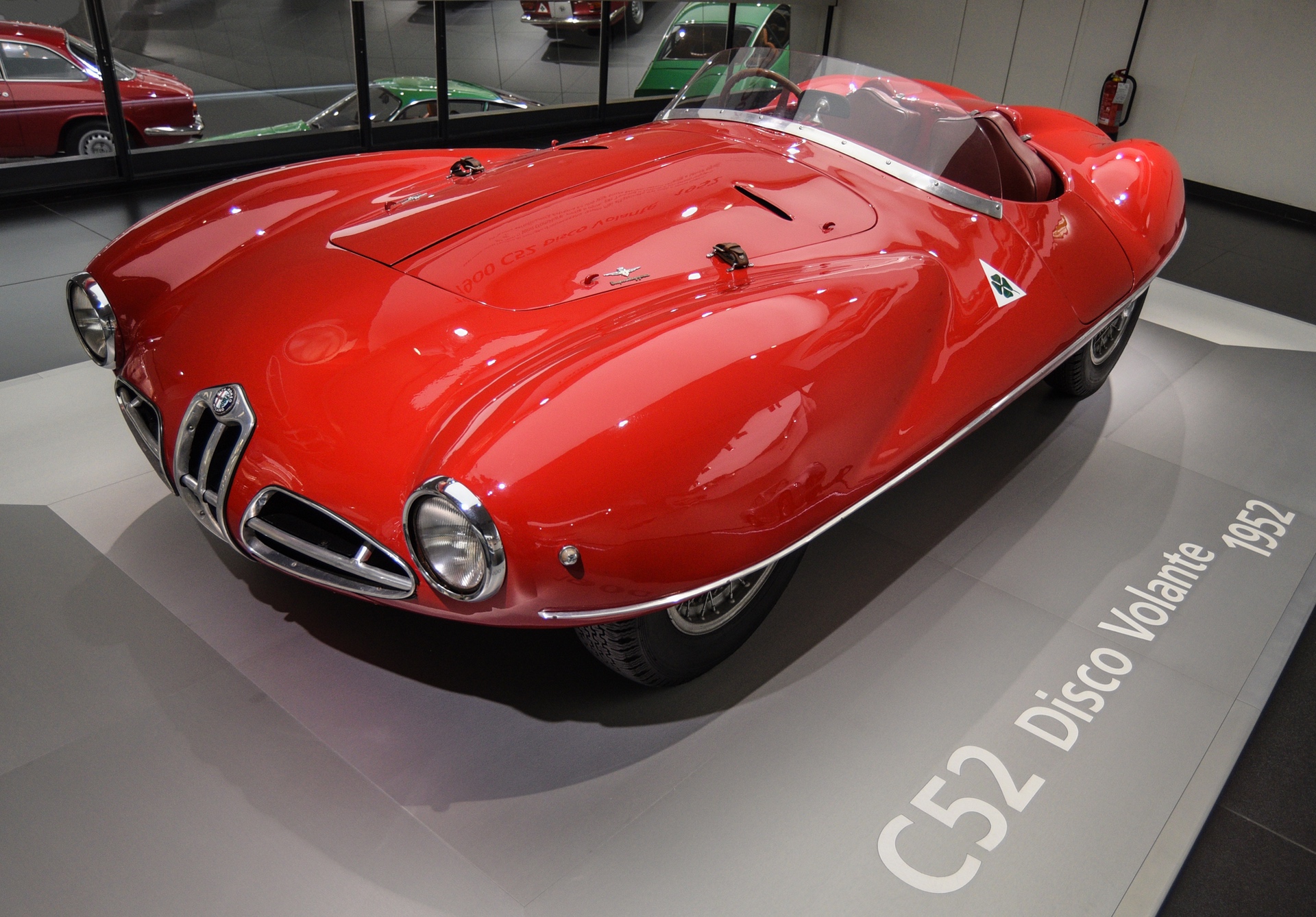







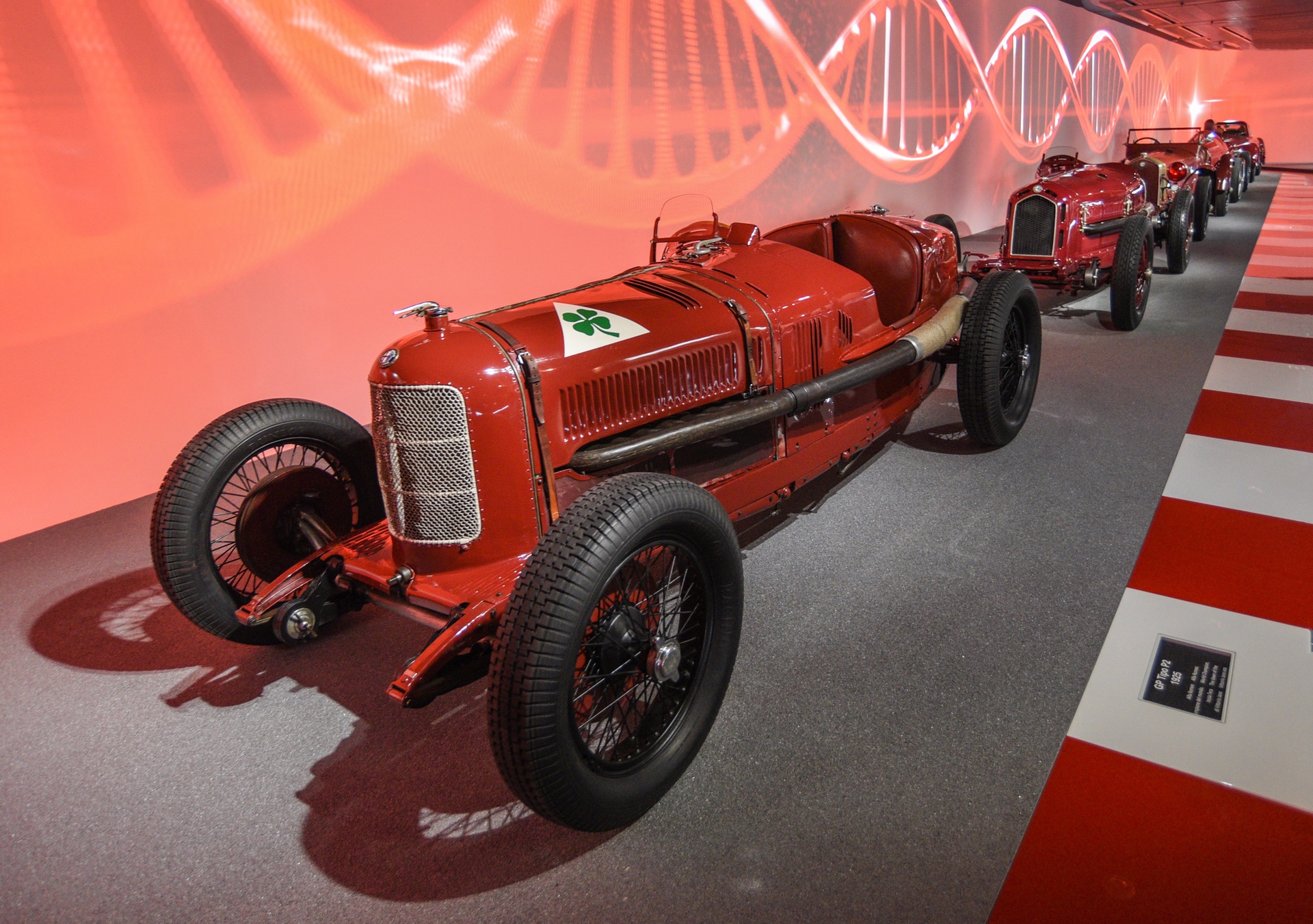



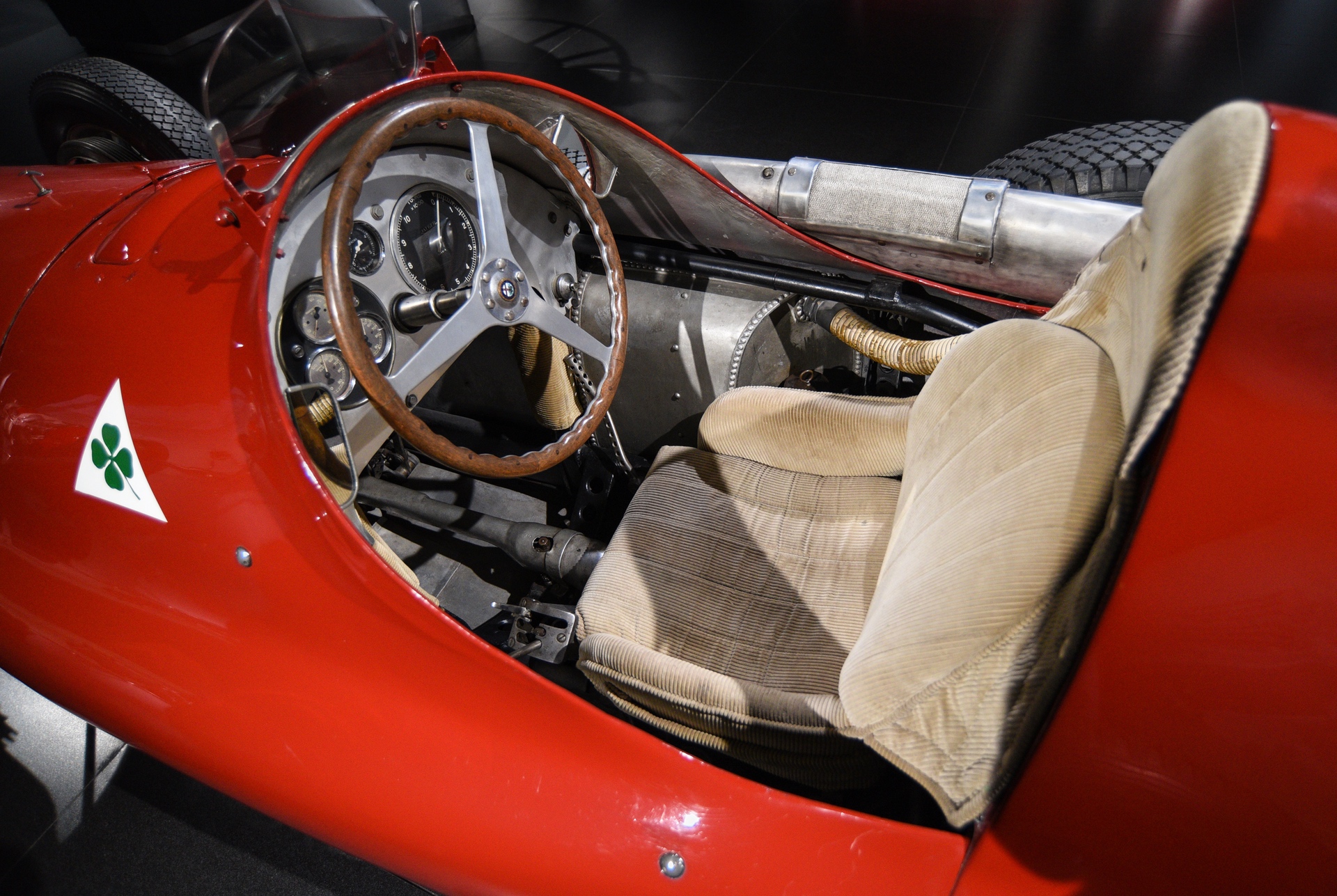
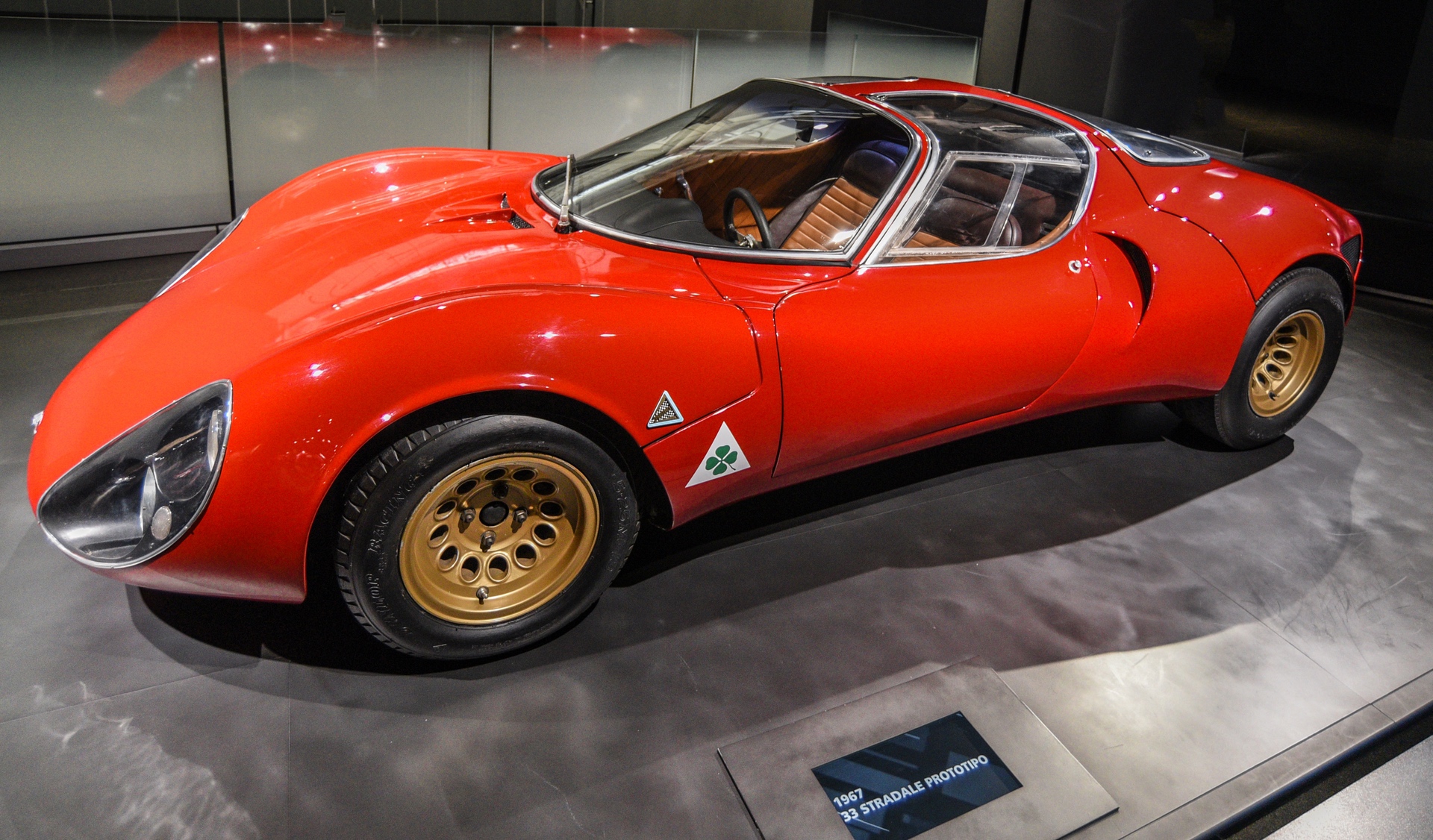



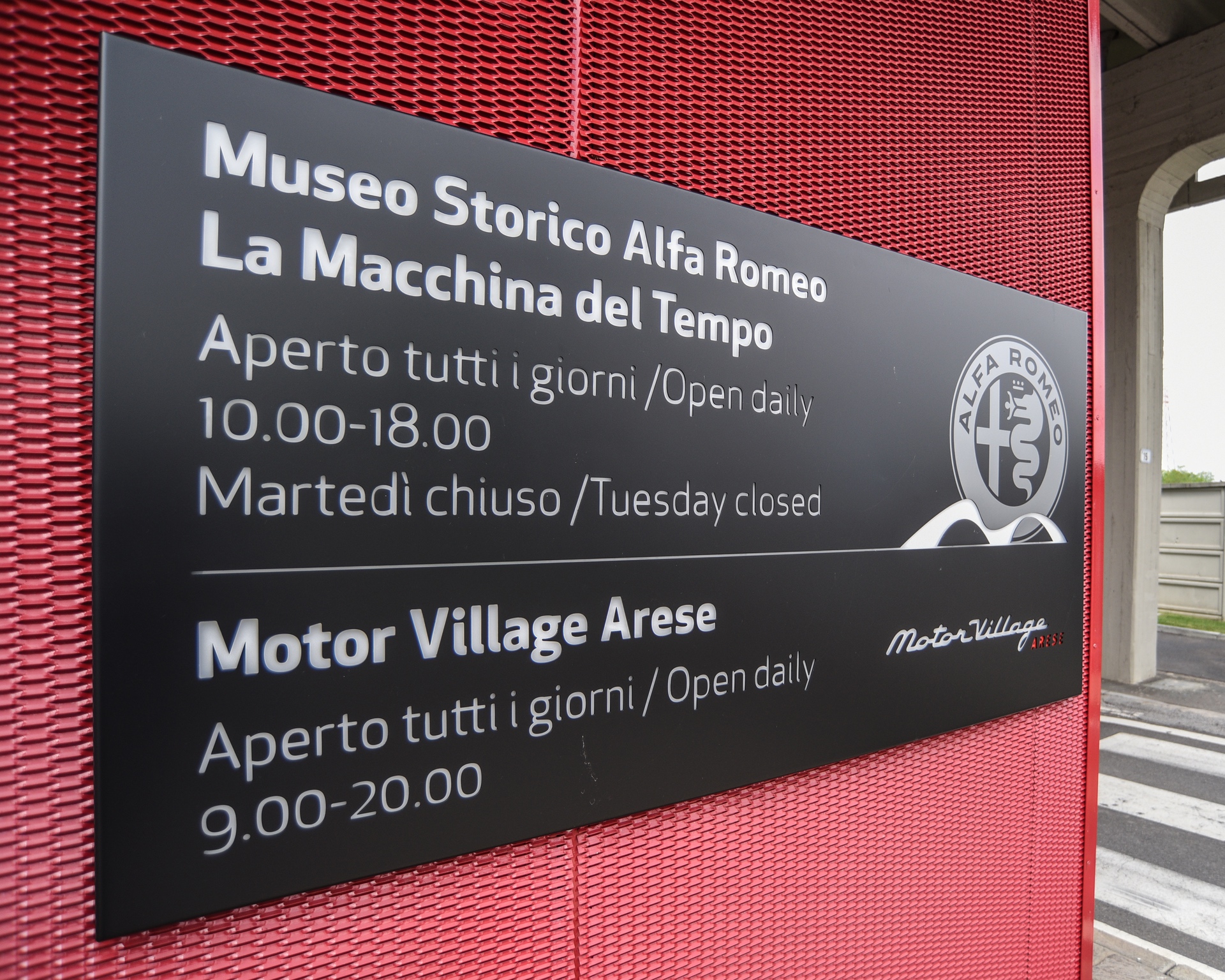





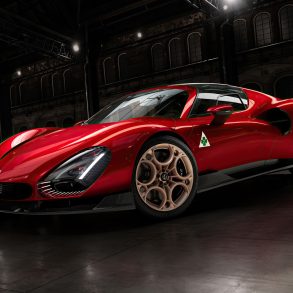

“Chestnut Torpedo”.
Great translation but maybe some more digging would have shown that “Chestnut” Castagna was the name of the coachbuilder who shaped the body after the wishes of its customer count Ricotti who wanted an aerodynamic vehicle. The noise and heat inside seems to have been horrible, so later the roof was chopped off.